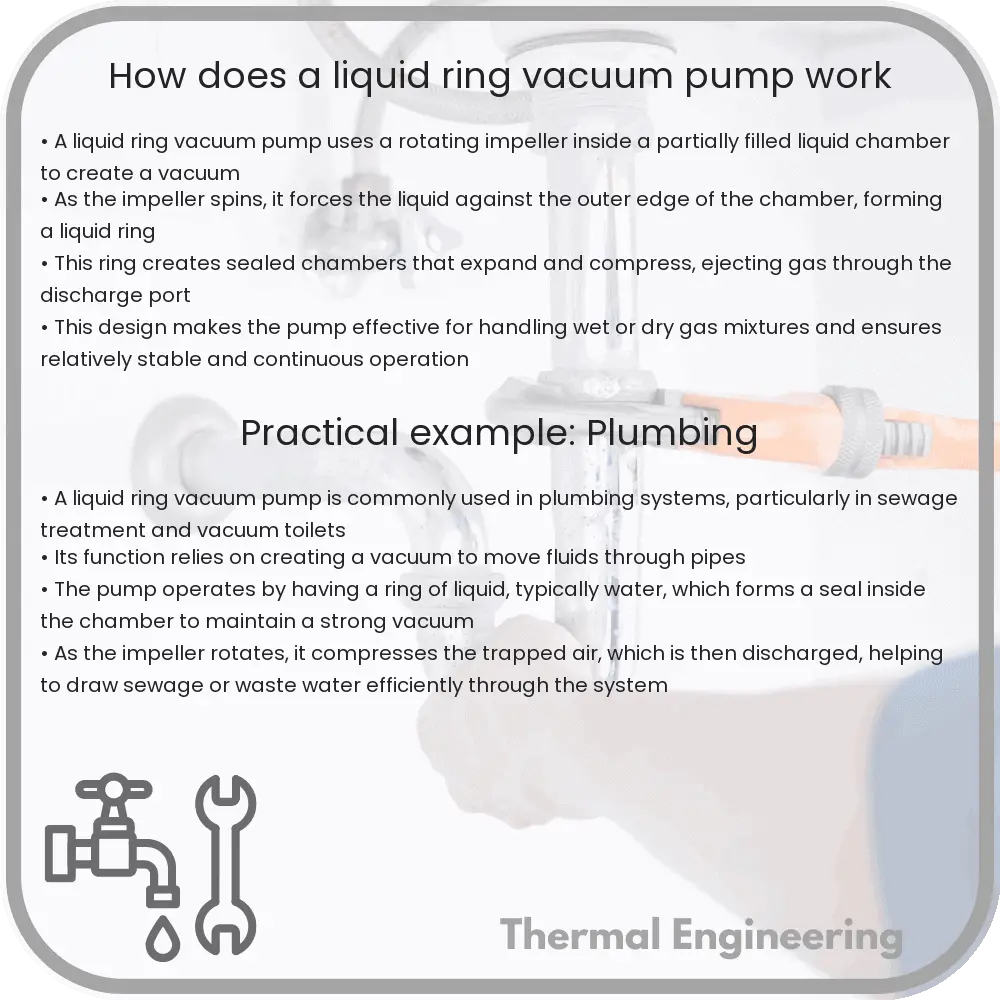Learn about liquid ring vacuum pumps, their design, operation, and applications in various industries.

Understanding the Liquid Ring Vacuum Pump
Liquid ring vacuum pumps are a class of rotary positive displacement machines that are used in a wide range of applications, from the chemical industry to the food processing field. The mechanism behind these pumps revolves around a simple principle involving a liquid seal, which provides a continuous vacuum without requiring complex structures.
Basic Components and Design
The core components of a liquid ring vacuum pump include an impeller, a pump body, sealing liquid (commonly water), and an inlet and discharge port. The design is characteristically straightforward: the impeller is positioned eccentrically within a cylindrical casing. As the impeller rotates, the sealing liquid inside the pump forms a ring due to centrifugal force, adhering to the inner walls of the casing.
Operational Principle
At the heart of the operation of a liquid ring vacuum pump is the interaction between the rotor, the sealing liquid, and the resulting vacuum. Here is a step-by-step process:
- The impeller rotates, and due to its off-center placement, the sealing liquid is thrown outward by centrifugal force, forming a ring against the casing.
- Because the impeller is eccentric relative to the casing, the depth into which the impeller blades dip into the liquid changes as it rotates, creating areas of varying volume between the blades and the liquid ring.
- As the volume increases in the area where the blades move outward, a vacuum is created, and gas is drawn into the pump through the inlet port.
- The gas is trapped by the liquid ring, moves through the pump chamber, and is compressed as the volume decreases when the blades move back inward.
- The compressed gas is then discharged through the outlet port, completing the cycle.
Advantages and Limitations
Liquid ring vacuum pumps are praised for several distinct advantages:
- Simplicity of Design: The construction of these pumps is straightforward, leading to easier maintenance and troubleshooting.
- Handling of Wet Loads: These pumps can handle wet gases or vapors without significant damage, making them ideal for applications involving moist environments.
- Minimal Wear: Since the impeller does not make contact with the casing, wear and tear are significantly minimized, enhancing durability.
However, these pumps come with their limitations:
- Energy Consumption: The need to maintain the liquid ring can lead to a higher operational energy cost, especially at higher vacuum levels.
- Liquid Dependency: The performance can vary significantly with the type of sealing liquid used and its temperature, potentially requiring close monitoring and control systems.
Applications of Liquid Ring Vacuum Pumps
Liquid ring vacuum pumps are utilized in various sectors due to their robustness and operational reliability:
- Chemical Industry: For distillation, drying, and other vapor extraction processes.
- Medical Field: They are used in autoclaves and other sterilization processes.
- Food Processing: Used in vacuum packing and other food preservation techniques.
By combining operational simplicity with versatility, liquid ring vacuum pumps play a crucial role in many engineering applications, offering both reliability and efficiency in handling gases and vapors under wet conditions.